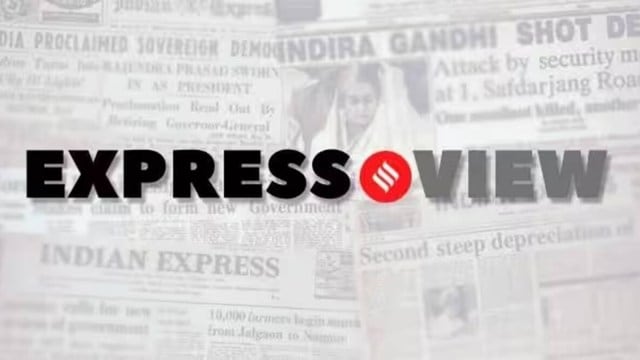
Over the past two decades, decentralisation has been the stated principle of the Centre’s universal education projects. The Sarva Shiksha Abhiyan — started in 2001 by the Atal Bihari Vajpayee-led NDA and continued by the UPA — claimed to make space for “context-specific solutions”. Rechristened the Samagra Shiksha Abhiyan (SSA) by the Narendra Modi government in 2018, the programme “proposed to give flexibility to the states and UTs to prioritise their intervention”. However, all too often, the commitment to federalism has remained on paper. If BJP-ruled states, such as Gujarat and Madhya Pradesh, complained frequently about the lack of autonomy vis a vis central funds for school education when the UPA was in power at the Centre, in the past 10 years, the Union education ministry has not always been on the same page with non-NDA states. Now, the ministry has stopped funds under the SSA to Delhi, Punjab and Bengal because of their reluctance to participate in the Pradhan Mantri Schools for Rising India (PM-SHRI) — the Centre’s scheme for exemplar schools.
While the AAP-run governments in Delhi and Punjab claim they already run a similar initiative, “Schools for Excellence,” TMC-ruled West Bengal has objected to prefixing PM-SHRI to the names of their schools — it contends that the moniker lets the BJP-led Central government take all the credit even though states bear 40 per cent of the cost. The eagerness of political parties to convey their role in welfare schemes to the voter is understandable. But the school-goer should not be caught in the cross hairs of competitive populism. The Centre’s insistence on linking SSA funds with the implementation of PM-SHRI and the refusal of the AAP and TMC governments to step back has precipitated a financial crunch in government schools in West Bengal, Punjab and Delhi.
The universal education programme has led to appreciable improvement in enrollment rates across the country. With schools beginning to implement the National Education Policy’s vision for student-centric pedagogy, the SSA’s role in addressing persistent challenges such as poor learning outcomes, inadequate infrastructure, lack of trained teachers and disparities in access and quality of education cannot be overstated. The withholding of funds could derail such efforts. Salaries for more than 2,000 government school teachers and staffers have been pending in Delhi since April. Also imperilled is the AAP government’s initiative to provide textbooks and uniforms in government schools, and support children with disabilities. On the PM-SHRI scheme, which aims to develop 14,500 government schools as model NEP institutions, Opposition-run governments in Kerala and Tamil Nadu have overcome their initial reservations about the project even as Delhi, Punjab and West Bengal refuse to sign the MoU. Under the AAP, Delhi has made significant strides in school education and the party’s government has reportedly taken steps to upgrade Punjab’s educational ecosystem. But as successive ASER reports show, Delhi and Punjab share West Bengal’s challenges in improving learning outcomes and school enrollment. Overcoming these requires continuous collaboration between the Centre and states. Politicking over SSA funds and the exemplar school scheme speaks poorly of their commitment to the future of the young.


